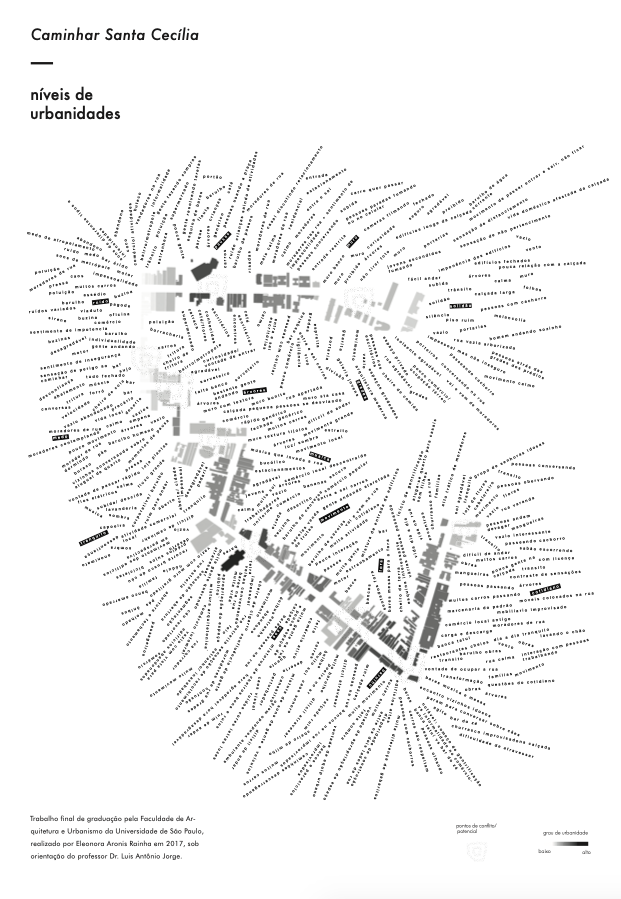Caminhar
Santa Cecília
research + exhibition
research + exhibition

caminhar santa cecília
developed for
Bachelor’s Degree (european masters equivalent)
in Architecture and Urbanism at the Faculty of Architecture and Urbanism,
University of São Paulo
+
11th Architecture Biennale of São Paulo
and Mario de Andrade Library’s permanent collection
abstract
The work proposes, through a reinterpretation of the history of walking as an aesthetic practice and the game of walking as proposed by Francesco Careri in Walkscapes, an experiment in reading and acting in public space. The study is divided into three parts: the first is theoretical, the second is analytical, and the third is project-based.
In the first part, the history of walking is presented as the basis for the thesis that cities were made from walking, and therefore walking should be used as the main instrument for the construction and modification of cities, so that they become increasingly walkable. This section also includes an analysis of the history of urbanism, comparing the three periods of city formation—ancient, modern, and contemporary—and their implications. Finally, it analyzes the configuration of public space in São Paulo (the case study) and the demand from the population for more accessible public spaces through various means.
In the second and third parts, an experiment based on the game of walking is proposed, with a neighborhood in São Paulo chosen as a case study. The selected neighborhood was Santa Cecília. As an introduction to the second part, the instruments to be used for the experiment are presented, which are not necessarily the instruments used in conventional urban analysis; they include walking itself, translated into corpographies, photography, and subjective mapping. Therefore, the second part is the result of the urban analysis experiment conducted using these instruments within the neighborhood and then along a defined route. At this stage, various maps, texts, drawings, and photographic essays were created.
Finally, the third part is a proposal for action in this area, where it is understood from the analysis through walking that nothing more should be built, but rather deconstructed. Along the route defined in the previous section, nine voids or urban situations are selected where space is freed from physical and visual obstacles, and a new way of occupying these spaces is proposed. Thus, it is concluded that only through analysis based on the presence of the body in space is it possible to truly understand the specific material and immaterial dynamics of each place, and thus propose changes to improve people's ability to relate to urban space.
thesis presented
with distinction
final jury
undergraduate degree (equivalent to european masters) in
Architecture and Urbanism
University of São Paulo
Tutor
Dr. Luiz Antonio Jorge
year
2017
for complete thesis
click here
thesis selected for
11th São Paulo Architecture Biennale +
Mario de Andrade Library’s permanent collection,
São Paulo, Brasil
2017
thesis presented at
Back to Human Scale Congress,
Lisbon, Portugal
2022
AMPS Congress,
New York, NY
2023
London, UK
2024


























